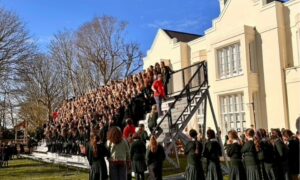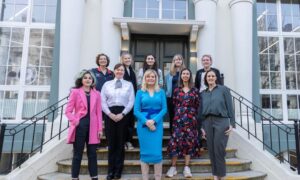Since moving to Brighton & Hove I have enjoyed discovering the city’s many green spaces: within this urban jungle (or more specifically, within the UK’s only urban biosphere) park life is flourishing – often nourished by community spirit. Back in September, my son planted daffodil bulbs in Wish Park, part of a local initiative to create a residents’ garden. Passing by this week, while battling the unrelenting wind and rain, I have been reassured to see the yellow tips emerging next to our named lollipop stick – a small reminder that Spring will soon be here and light will return, bringing with it the hope of a brighter future.
Just as the daffodil shoots have given me hope this week, I have enjoyed turning my mind to another burgeoning project. While we wade through weekly risk-assessments and navigate the complexities of COVID, our development project is coming on apace. Like the daffodils, it serves as a helpful reminder that something new and exciting is about to unfurl. In the coming weeks, we will be sharing snippets of videos that will bring the project to life, and I hope to capture some of the excitement that is starting to grow. This week, I offer a glimpse of our plans for the outdoor spaces.
The brilliant team working on the green spaces around the Temple and Vicarage has, so far, comprised teachers, support staff, landscape architects, an arboriculturalist (by repute the finest in the land), heritage consultants, members of the local Conservation Advisory Group, and parents with expertise in this field. If you are wondering what to expect from the enhanced green spaces on the Montpelier site, expect something magical.
Brighton Girls is affectionately known as the Green School; it has often been described as a hidden gem. As part of this development, will aim to transform this precious space we have into a verdant oasis. Our vision is in keeping with the Brighton & Hove Council’s plans to increase the biodiversity of the city, and to champion grow-your-own projects in schools, something known to have wellbeing benefits. In the heart of this urban biosphere, our aim is to create the perfect habit in which children can flourish: a space to set down roots; a space to discover; a space to grow.
When I listen to Peter Williams, the lead landscape architect for this project, I visualise an edenic scene. Peter conjures up majestic holm oaks, sensory planting and (my personal favourite) edible gardens. Within this ecosystem will be found bug-hotels, an adventure playground, outdoor seating, open-air teaching spaces for all ages and, if one GDST colleague gets their way, you will need to watch your step for the sunken trampolines.
As we explained to local residents last week, this project will enhance the whole neighbourhood – I see the future green spaces of Brighton Girls as a complement to the beautiful gardens at St Anne’s Wells around the corner. Further away, we have plans to make more of Boughrood, our field centre in the Wye Valley. Boughrood will become an extension of the school’s garden space, offering a rural retreat from our city location.
Not this Spring, but maybe the next, I have visions of sitting on the new amphitheatre steps outside the Temple enjoying open-air productions, and when I listen to the brilliant ideas being shared, I can’t help but think of the green worlds of Shakespearean comedy. Coined by the critic, Northrop Frye, the ‘green world’ describes such spaces as the Forest of Arden in ‘As You Like It’ and the forest in ‘A Midsummer Night’s Dream’; the green world is a space where characters retreat from their normal, work-a-day lives to a magical, restorative realm, a place where problems are solved and creativity and freedom reign.
From our desk-bound, screen-heavy, cabin-fevered existence, the idea of escaping to the green world (perhaps to stay in a bug-hotel or to pick fruit from an editable garden) is very appealing indeed.


